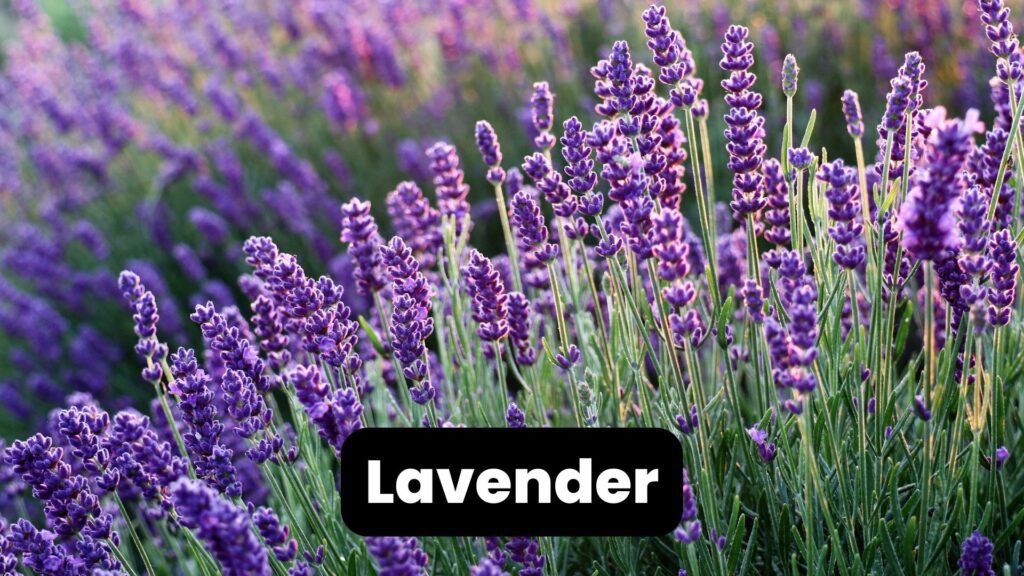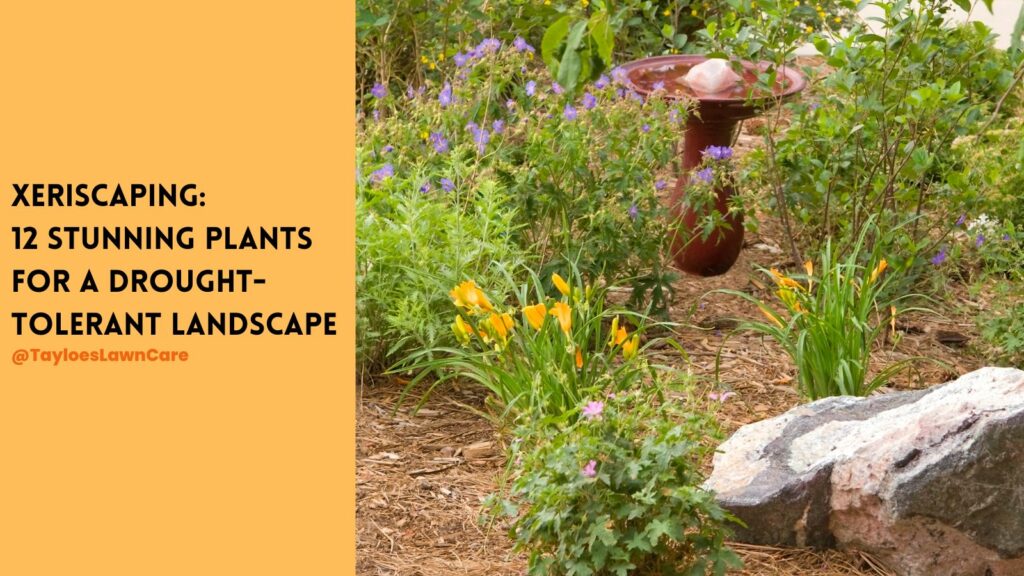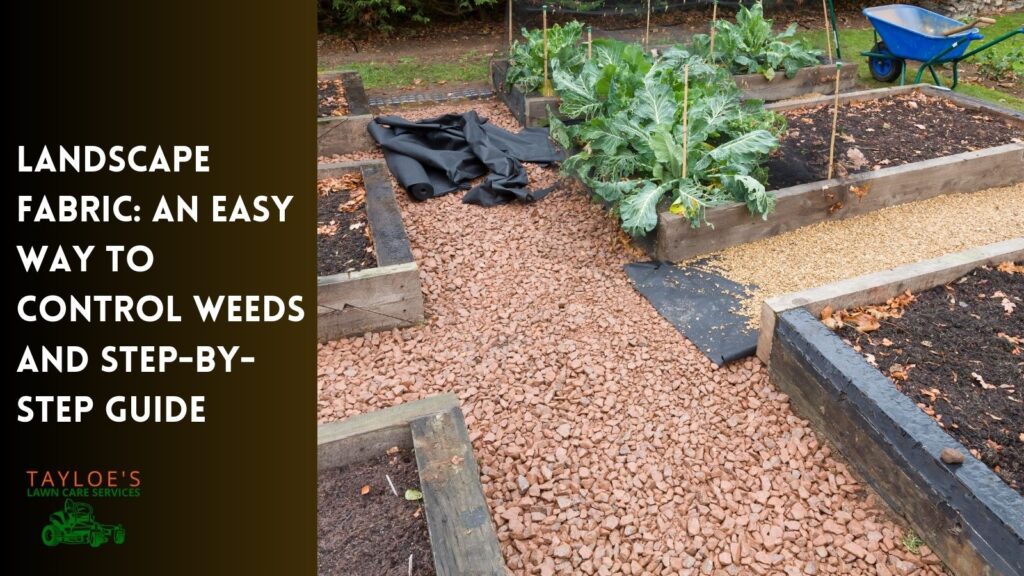Last Updated on: 26th July 2024, 03:00 pm

How and why should you divide plants?
Dividing perennials is an easy and inexpensive way to gain additional plants for your garden or to share. The three main reasons for dividing perennials are to control the plants’ size, help rejuvenate them, and increase their number. Dividing and replanting keep rapidly spreading perennials under control. Dividing will rejuvenate old plants, keeping them vigorous and blooming freely.
When to Divide Perennials
In general, it is best to divide spring and summer blooming perennials in the fall and fall bloomers in spring.
By dividing the plant when it is not flowering, all the plant’s energy can go to root and leaf growth.
Fall division here in North Carolina should occur between early September in uppermost Piedmont and mid-to-late October closer to the coast. Allow at least four to six weeks before the ground freezes to establish the plants.
Preparing Perennial Plants for Division
Water plants to be divided thoroughly a day or two before you plan to divide them. Prepare the area you plan to put your new divisions in before lifting the parent plant. Prune the stems and foliage 6 inches from the ground to ease division and reduce moisture loss. Add organic matter to improve soil texture and water-holding capacity.
Lifting and Dividing Perennials and Ornamental Grasses
Use a sharp, pointed shovel or spading fork to dig down deep on all four sides of the plant, a few inches away from the plant. Pry underneath with your tool and lift the whole clump to be divided.
With heavier or larger plants, you may need to cut them into several pieces with your shovel before lifting them. Separate the plant into smaller divisions using a sharp knife or by gently teasing the roots apart.
Note that you will probably have fewer flowers for a few weeks after root division. But you get the payoff when have many perennials – and even more blooms – the following year.
Understanding the Various Types of Root Systems Before You Divide Perennials
Understanding the root system of the newly divided plant will help you get the best results. Here are the most common types of root mass you’ll encounter in eastern North Carolina
Spreading Root Systems (or Fibrous Root System)
Spreading root systems have many slender, matted roots originating from locations with no distinct pattern.
Plants with spreading root systems include:
Lavender
Phlox paniculata
Asters
Bee balm
Lamb’s ear
Blanket flower
Russian sage
These vigorous plants can crowd out their own centers. Some can be invasive unless divided frequently. Divide the plants into clumps of three to five vigorous shoots each.
Clumping Root Systems
The clumping root systems originate from a central clump with multiple growing points. Many have tough root systems with thick, fleshy roots.
This group includes:
Astilbes
Hostas
Butterfly weed
False indigo (which is very hardy difficult to transplant!)
Many ornamental grasses
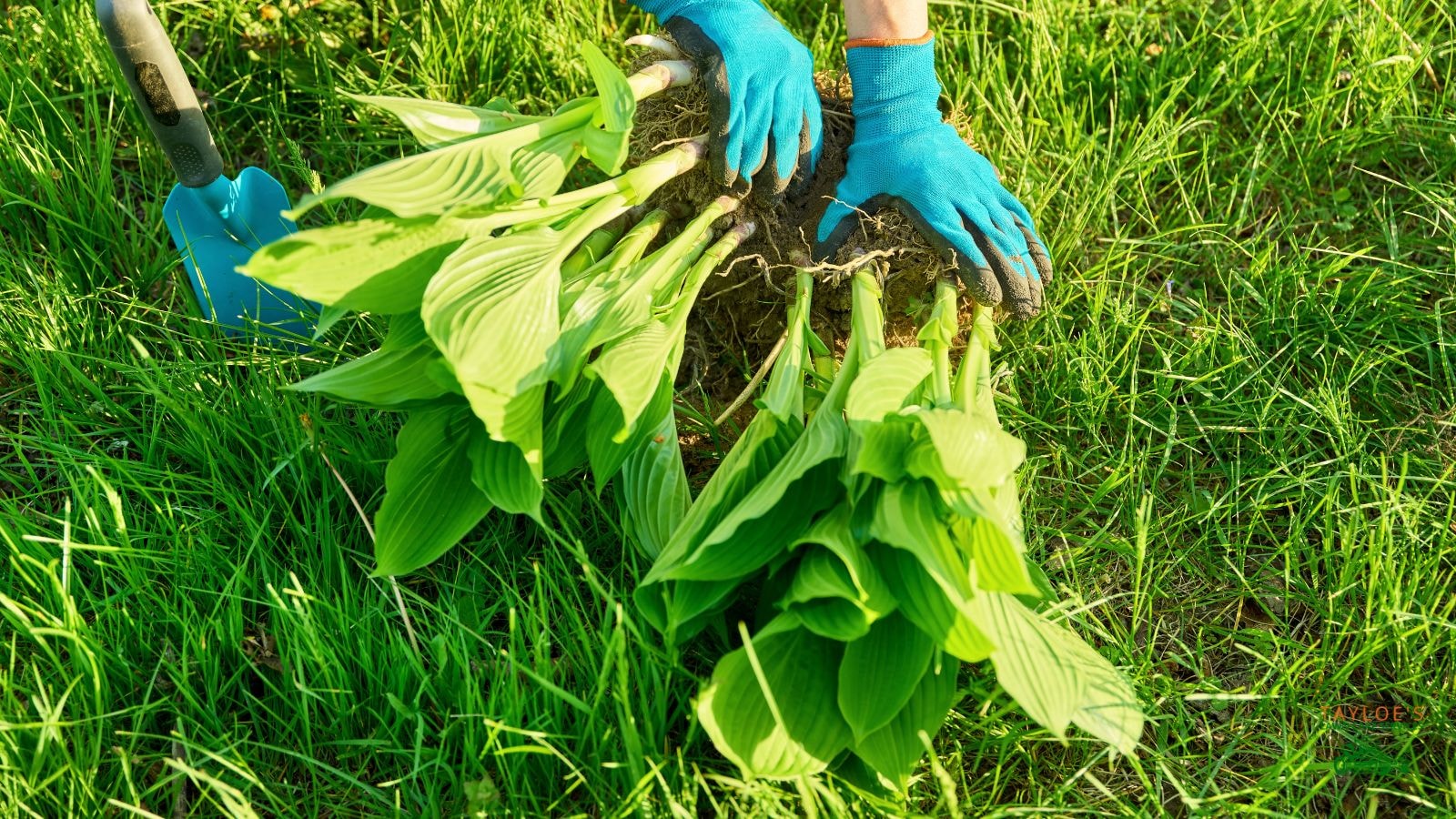
You might need to use a heavy, sharp knife to cut through many perennial plants’ woody crowns. Keep at least one developing eye or bud with each of the woody divisions.
Root Division of Perennials with Tuberous Roots
To divide perennial plants with tuberous roots, such as dahlias and canna lilies, divide the plant clumps in the early fall. Shoot for the time frame after the foliage has died back but before the first hard frost. Carefully lift the clump from the ground, gently brushing off excess soil to expose the tubers.
Using a clean, sharp knife or garden shears, separate the tubers. Ensure each root division has at least one eye or growing point, which is essential for new growth of the plants divided.
Common flowers we have in eastern NC that are part of this group include:
Dahlias
Canna lilies
Begonias
Anemones
Like many perennials, these species also benefit from regular division to maintain their vigor and promote abundant blooming in the new plants.
After dividing, allow the cut surfaces to dry and callous over for a day or two to prevent rot, then replant the tubers in well-draining, loose soil at the appropriate depth for the specific plant species.
Rhizome Division
Rhizomes are stems that grow horizontally at or above the soil level. Bearded irises are the most common perennial with this type of root system. Divide irises any time between a month after flowering until early fall. Cut and discard the rhizome sections that are one year or older.
Dividing Specific Perennials
Ornamental grasses respond better to spring division, while astilbes, irises, and peonies are partial to fall division. Daylilies, hostas, and many spring-flowering plants or early spring species can be divided in spring or fall. Summer-blooming perennials like coneflowers and black-eyed susans can be divided in the fall. Herbaceous perennials like coral bells and foam flowers can be divided in the spring.
Planting Divisions for Healthy Root and Leaf Growth
Never allow divisions to dry out. Keep a pail of water nearby to moisten divisions until they are planted. I use those handy yellow 5-gallon kitty litter buckets for this job.
Trim all broken roots with a sharp knife or pruners before replanting. Plant the divided sections immediately in the garden or in containers at the same depth as the parent plant.
Pruning Techniques and Tips Before You Divide Perennials
Pruning is essential for maintaining the health, shape, and productivity of most perennials. Here are some key tips for effective pruning techniques before you divide clumps:
Use the Right Tools: Always use sharp, clean pruning shears, loppers, or saws to make clean cuts that heal quickly. Disinfect tools between cuts to prevent the spread of disease.
Know When to Prune: Different plants have different pruning times. Generally, deciduous trees and shrubs should be pruned in late winter while they are dormant, and spring-flowering plants should be pruned immediately after they bloom.
Remove Dead or Diseased Wood: Cut out any dead, damaged, or diseased branches. This prevents the spread of disease and allows the plant to focus energy on healthy growth.
Cut at the Right Angle: Make cuts at a 45-degree angle, just above a bud that faces outward. This encourages new growth to spread away from the center of the plant, promoting better air circulation and light penetration.
Thin Out Dense Growth: Remove some branches from dense areas to increase light and air circulation, which reduces the risk of disease and encourages more robust growth and flowering.
Avoid Over-Pruning: Never remove more than one-third of a plant’s foliage at a time. Over-pruning can stress the plant and reduce its ability to photosynthesize effectively.
Shape the Plant: Prune to maintain the plant’s natural shape. For formal shapes, like hedges or topiaries, regular light pruning is necessary to maintain the desired form.
Rejuvenate Older Plants: For older shrubs and trees, consider rejuvenation pruning. This involves cutting back one-third of the oldest branches to the base over three years, encouraging new growth.
When you follow these tips, you can keep your plants healthy, attractive, and productive throughout the growing season.
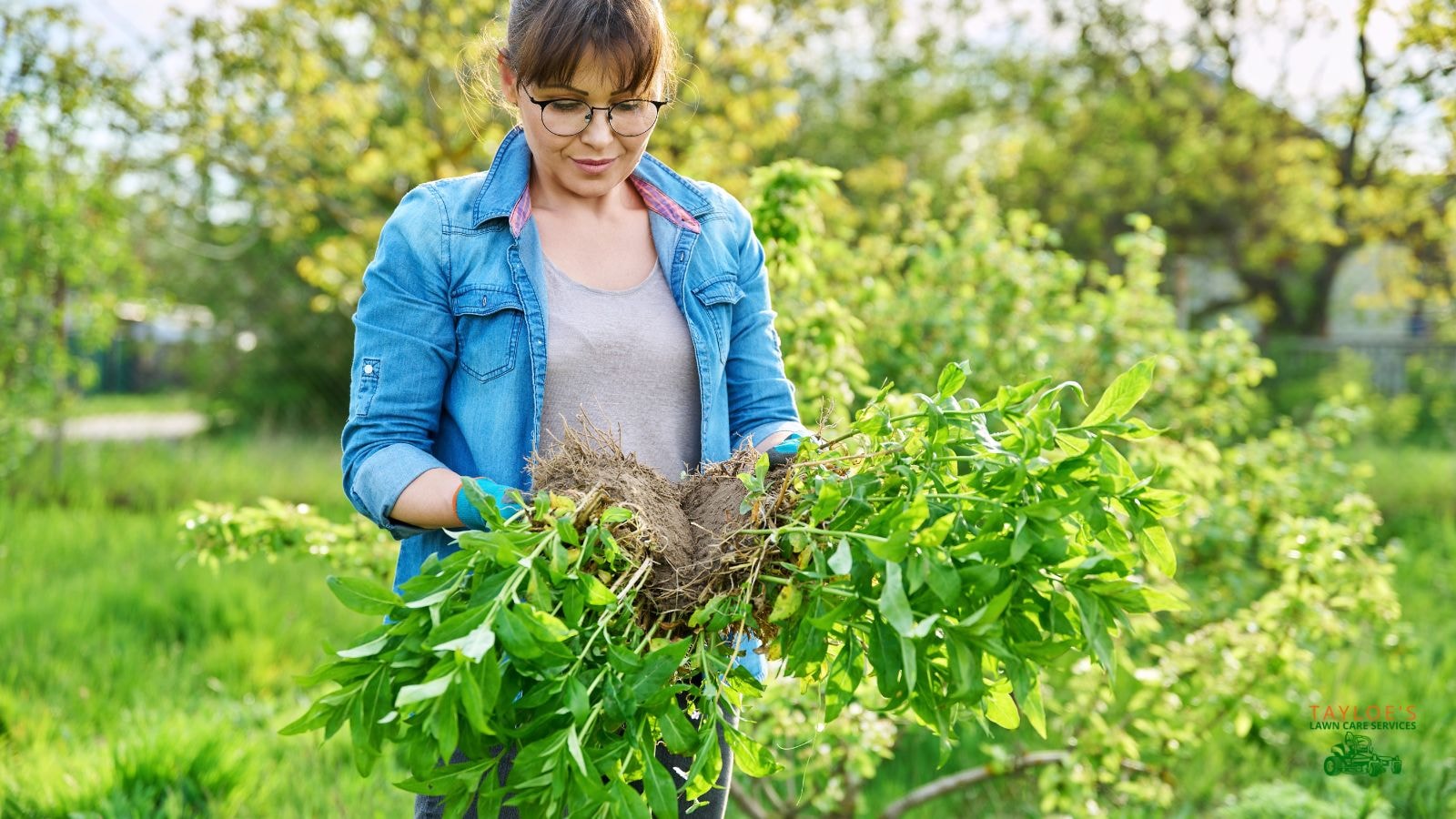
Common Mistakes to Avoid When Dividing Perennials
Avoid making these common errors as you divide plants:
Dividing perennials during the hottest summer months.
Not watering the plants thoroughly before division.
Forgetting the area for the new divisions before lifting the parent plant.
Failing to prune the stems and foliage before division.
Post-Division Care and Maintenance
Water the newly divided plants thoroughly.
Mulch around the plants to retain moisture and suppress weeds.
Fertilize the plants in the spring with a balanced fertilizer.
Deadhead the flowers to encourage more blooming.
A Well-Tended Perennial Garden Means Managing the Root Growth of Vigorous Plants by Dividing the Root Ball
Dividing perennials is a simple and effective way to have more plants in your garden from early spring until the first frost of fall. By following these steps and tips, you can successfully divide your perennials and enjoy more plants and a healthier garden.
Do your need a helping hand with this job or other lawn or garden maintenance tasks? Connect with Tayloe’s Lawn Care Services on Facebook or text us directly at 252.287.3376. We are here to help you with your lawn and garden maintenance needs.
Author Profile

- Deborah Tayloe is the CEO and co-founder of Tayloe's Lawn Care Services, LLC. She has a B.S.Ed and holds certificates in soil and water management and herbology from accredited programs.
Latest entries
 GardeningSeptember 27, 2025What perennials, shrubs, and trees don’t like fall pruning (and why)?
GardeningSeptember 27, 2025What perennials, shrubs, and trees don’t like fall pruning (and why)? Trees and ShrubsSeptember 14, 2025Fall Shrub Pruning Guide (September–October)
Trees and ShrubsSeptember 14, 2025Fall Shrub Pruning Guide (September–October) Trees and ShrubsApril 22, 2025Boxwood Blight: Early identification and isolation
Trees and ShrubsApril 22, 2025Boxwood Blight: Early identification and isolation Flower GardenApril 8, 2025John F. Kennedy Rose: Hybrid tea rose with elegant white blooms
Flower GardenApril 8, 2025John F. Kennedy Rose: Hybrid tea rose with elegant white blooms

